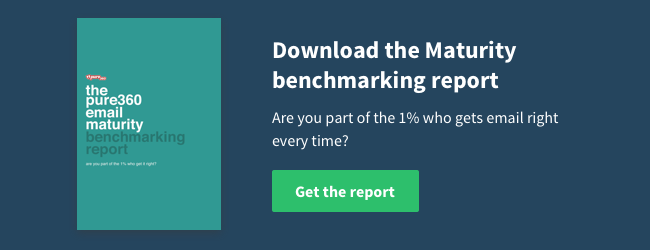Good habits motivate us to be better and also provide opportunity for improvement, which is especially true in email marketing when tracking results of campaigns. Forming good habits early can ensure that your emails always end up where they should and achieve the results you want them to. Help yourself and your business with our 7 most important habits of highly effective email marketers.
Database
Data is an increasingly important part of your email marketing strategy, fact. Whilst ‘keeping your data clean’ is the main message here, monitoring your subscribe and unsubscribe rates is pretty important too. Improve your subscribe rate within minutes by updating your email newsletter sign up form, but don’t let it stagnate again. Remember quality over quantity will far outweigh a dirty and unmanageable list.
Habit 1: Include a double opt-in so subscribers can confirm their interest, and never hide your unsubscribe link.
Habit 2: Always keep an eye on your unsubscribe rates to find out why customers are leaving your database.
Campaign
Your newsletter delivers information to your fans and is used to communicate and grow a relationship. Not only that, your campaign is part of a complex network of algorithms all used to improve subsequent segmentation and personalisation to increase conversion rates and analytics. A great habit of an effective marketer is focusing your email campaigns around individual steps in the buyer’s journey, by giving your readers helpful content instead of directly selling to them. In order to deliver a successful campaign, it must have high deliverability and minimal chance of being flagged up as spam (this is where your testing comes in).
Habit 3: Check your segmentation – is it appropriate and could you add another level of sophistication to it? Remember, each tier of segmentation further increases the targeting of your campaign and will improve your ROI.
Content
We all know that content is king, and more than ever it’s important to keep your content fresh and relevant, not simply rolling out the same message each time. You might think, then, that “habitual emailing” (i.e. emailing at the same time every week with similar messages) is a bad thing, but those who do have a degree of regularity to their emails will have come to that arrangement through A/B testing their campaigns; test a small segment today and see what happens.
Habit 4: A/B test your campaigns to determine if certain variables have an impact on your open rate. For example does an image have a higher click-through-rate than a button? A/B testing will reveal all about your target market.
Automation
The most sophisticated email marketers allow automation to do the majority of the hard work. With triggered messaging nurturing customers through each stage of their journey, make a habit of automating your messages to save you valuable time and money.
Habit 5: Always have an automated welcome email. These have significantly higher open rates than other messages and are a simple way to provide information about offers, company information and a chance to update their preferences.
Personalisation
If content is king, then personalisation is queen of email marketing. Think how impressive it is when someone knows your name and remembers what you are interested in. Receiving an email that speaks to you is always going to receive higher engagement and lead to better open rates than a generic email from noreply@donotemail.com.
Habit 6: Personalise as much as possible using reliable, accurate data. Also ensure that you are personable too. Remember, you want customers to want to hear from you.
Prediction
You shouldn’t need a crystal ball to predict the path of your customers, remember that lead nurturing is worth consideration as it can lead subscribers into becoming big spenders with you. Times change, your customers needs change, and if you can stay one step ahead of the game you will educate and inform your customers into making a purchase.
Habit 7: Have a cohesive email marketing strategy in place, and review it frequently.
Habits
Habit formation takes time, and these changes won’t happen overnight (researchers used to say it took 21 days to form a habit, now it’s around 66 days). Start small and start early, so these good habits become second nature to you. If it all seems too complicated or difficult, remember you can always rely on the experts for advice and assistance.
Where should you start? At the very beginning, with our email marketing benchmark report. Identify what stage of sophistication your email is currently at and then identify what changes or habits you can implement now to make a real difference to your campaign success.

